Sergeant Thomas Lucken, U.S. Army – Knocking on the Cold War’s Door
It’s easy to take for granted the freedoms we have because we live in a country isolated from its adversaries by two vast oceans. As a result, most of us live our lives unconcerned with the possibility of an invading foreign army. Many U.S. allies do not enjoy the same luxury, as they find themselves bordered by authoritarian regimes ready to cross their borders at the first sign of weakness. The U.S. has supported its allies since the end of World War II by sending forces to stand with them against would-be aggressors. Sergeant Thomas Lucken, U.S. Army, was one of those soldiers called to hold the line during the Cold War by spending over thirteen years overseas in South Korea and Germany as a Cavalry Scout. This is his story.
Tom was born in Peoria, Illinois, in July 1963, and initially lived in the Quad Cities area of northwest Illinois after his parents moved there from Iowa. In 1967, his parents moved again to Florissant, Missouri, a suburb of St. Louis, where Tom’s father worked as a writer for the St. Louis Globe Democrat. Tom joined the Boy Scouts when he was eight years old, beginning a life-long passion for Scouting he would pass on to his own boys. He also enjoyed hunting and fishing and doing anything outdoors, all skills that would prove useful later in life.
Tom loved sports, so it was only natural he played football when he entered McCluer North High School in 1977. He played football until he injured his knee during his sophomore year and then channeled all his energy into Scouting. During his junior year, Marshall’s Department Store opened in Florissant and Tom got hired as a stock clerk. This meant he had to further divide his time between work, Scouting, and studying, with studying drawing the short straw.
Tom graduated from McCluer North High School in May 1981. While still working at Marshall’s, he enrolled at Florissant Valley Junior College in the fall, but quickly decided that was not what he was looking for. When his mom asked, “What are you going to do with your life?”, he had an answer. A friend of his, Nick Morrison, had been talking to an Army recruiter, and Tom had decided to check it out. So, in September 1981, Tom and Nick visited the recruiting office to see what their options were.
The recruiter sat down with Tom and showed him a book of the available jobs (referred to as Military Occupational Specialties, or “MOS”). When Tom saw one of the jobs was Cavalry Scout and watched a video to see what the job entailed, he was hooked. Being half-Native American and a huge fan of John Wayne, he felt being a Cavalry Scout was in his blood. As a Cavalry Scout, Tom would serve as part of a highly mobile force acting as the “eyes and ears” of the Army, gathering information about enemy positions and relaying it back to main body forces ready to respond. He enlisted in the Delayed Entry Program in October 1981 and reported for active duty on January 11, 1982.
After taking his oath to support and defend the Constitution of the United States, Tom reported for Basic Training at Fort Knox, Kentucky. His recruiter had told him he would attend Basic Training for eight weeks and then transfer to another unit for six weeks of Advanced Individual Training, or AIT, for Cavalry Scouts. However, when he arrived at Fort Knox, he learned he would spend all fourteen weeks training with the same drill sergeant. Drill Sergeant Pack made the announcement with a glint in his eye, “I don’t care what your recruiters said, you’re ours for the next fourteen weeks,” although the original language was slightly more colorful.
About five weeks into Basic Training, Tom’s unit did a forced march to the firing range to begin a week of Basic Rifle Marksmanship (BRM) training. On the way there, Tom sprained his ankle, but didn’t want to say anything to the drill sergeant. Still, Drill Sergeant Pack saw Tom limping a little and asked Tom what was wrong. When Tom replied, “I twisted my ankle, Drill Sergeant,” Drill Sergeant Pack showed no mercy and Tom asked for none – he finished the march back to the barracks. That night, when Tom took off his boots, his ankle was swollen to the size of a softball. His recruit platoon leader, Pedro Vazquez, told Tom they had to let Drill Sergeant Pack know. At first Tom refused, but later relented. When Drill Sergeant Pack saw Tom’s ankle, his eyes widened. He told Tom to report to sick call to get it checked out.
Tom reported to sick call as directed and was told to use crutches for seven days and put on light duty for ten. He still was able to complete his BRM training, but instead of marching to the range, he was driven their because of his ankle. More important, Drill Sergeant Pack treated Tom differently for the remainder of Basic Training. Tom believes it was because he hadn’t complained about his ankle and continued to march even when hurt. He’d proved himself a soldier to Drill Sergeant Pack.

Aside from the ankle sprain and living in World War II era barracks, Tom’s experience at Basic Training and AIT was positive. His Scouting and outdoors experiences growing up fit in well with the training and he found himself doing much better than the recruits from cities as they hadn’t had the same experience. It wasn’t all easy, though. They were constantly on the march through the hilly countryside, “up Agony and down Misery,” two particularly notorious hills on the base.
At the end of AIT, Tom was held over one week to learn to operate the M901 Improved TOW Vehicle (ITV), which was an armored personnel carrier modified to carry a TOW missile launcher on the top. After completing this additional training, he was directed to report to Alpha Troop of the 6th Cavalry Squadron, 1st Training Brigade, also at Fort Knox. For the next eleven months, he was responsible for maintaining an M113 Armored Personnel Carrier (APV) and using it to train new recruits. Although he was only an eighteen-year-old Private (E-2) just out of Basic Training and AIT, he was a soldier as far as the recruits were concerned and was already passing on what he had learned.
Toward the end of his assignment with the 6th Cav, Tom received orders to report for duty in South Korea, which was the front line of the Cold War. He arrived in Seoul in April 1983 and spent about three days at the 2nd Infantry Division headquarters and three days at the replacement detachment, both located at Camp Casey, about forty miles north of Seoul. Finally, he reported to his unit, Alpha Troop of the 4th Cavalry Squadron, 7th Cavalry Regiment, at Camp Garry Owen, located about twenty-six miles from Seoul and just eight miles south of the Demilitarized Zone (DMZ) between South and North Korea. If the North Koreans were to launch an attack against South Korea across the DMZ as they did in 1950, Tom’s unit would be one of the forward-positioned U.S. units bearing the brunt of the attack.
Tom realized the seriousness of his assignment when he drove a five-ton truck to Freedom Bridge using the only traffic corridor in the western segment of the DMZ. After passing through a U.S. checkpoint, he saw signs on both sides of the road warning of minefields. He then crossed an old trestle with wooden planks he wasn’t sure were strong enough to support the weight of the truck. From that point on, he knew he had to be at the top of his game all the time or the results could be disastrous.
In June 1983, Tom conducted his first thirty-day rotation with Alpha Troop as an M113 APV driver to patrol the DMZ. The unit’s mission was to support the U.S. infantry battalion defending the DMZ, which was itself on a ninety-day rotation. During its thirty-day mission, Tom’s Troop supplemented the infantry battalion’s patrols on the South Korean side of the DMZ, conducted ambush training, and served as part of the quick reaction force. After three days on patrol, the Troop resupplied for a day before starting the cycle over again.
Aside from the frequent rotations to the DMZ, the only other excitement during Tom’s tour was President Ronald Reagan’s visit to the DMZ in November 1983, but Tom didn’t get to see him. Instead, his unit was locked down at Camp Garry Owen, prepared to react in case North Korea attempted to disrupt the President’s visit.
After completing his one-year tour of duty in South Korea, Tom received orders to report to the 1st Squadron of the 4th Cavalry Regiment, located at Fort Riley, Kansas. The Squadron was the Divisional Cavalry Unit for the storied 1st Infantry Division, known as the “Big Red One”. As part of the unit, Tom operated the M113 APC and the M901 ITV, and occasionally worked with M60A1 tanks. In the fall of 1984, the unit conducted two weeks of training at the National Training Center (NTC) at Fort Irwin, California, becoming the first Divisional Cavalry Unit to do so. The unit spent the first week training in the intense heat of the Mohave Desert, and then spent the second week conducting live-fire exercises.
In January 1986, Tom deployed with the 4th Cavalry to Germany as part of the annual REFORGER Exercise, where the United States and its NATO allies tested their ability to quickly deploy forces to Germany to thwart any future Warsaw Pact aggression. After drawing equipment from Karlsruhe Kaserne near Frankfurt, the units spent two weeks in the field living in tents and exercising with other NATO units. They then reversed the process, stowing their equipment at Karlsruhe Kaserne, and returning to the United States in March. The trip was not entirely work, as Tom visited the site of the 1972 Munich Olympics and drank warm beer in real German restaurants.
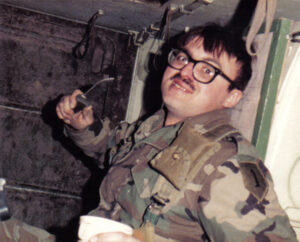
Once back at Fort Riley, Tom returned to his normal duties. This included working with the special forces teams training at the repelling tower and running “rope corrals” teaching ROTC officer candidates how to tie knots (who better to do that than a former Boy Scout). During one such knot tying session, a friend of Tom’s from high school came through as an officer candidate. He asked Tom for advice in selecting a service branch and Tom told him the Cavalry was the way to go. A few years later, he learned his friend had taken his advice and was now a Captain commanding a Cavalry Troop in Europe.
As Tom entered his third year at Fort Riley, he began looking at options for his next tour. His friends told him to request duty in Germany, patrolling the border between West and East Germany. He put in several requests, but never heard back. Finally, tired of both Fort Riley and waiting for a response on his Germany request, he put in a Form 4187 request for duty in Korea. This time is his sergeant first class had good news – his request was approved.
The result was in March 1987, Tom reported to Bravo Troop of the 4th Cavalry Squadron, 7th Cavalry Regiment, at Camp Garry Owen in South Korea. This time, though, he served as a dismounted scout in one of the last “Blues Platoons”, where he and other Cavalry scouts were ferried to their insertion points by helicopter, conducted their scouting missions on foot, and then walked back to designated U.S. positions. In July while he was on one such patrol, the radioman in his unit stepped on an unmarked anti-personnel landmine and it detonated. Tom and the radioman had to be medevac’d from the site and Tom suffered a severe concussion from the blast. It also took over 600 stitches to sew up his wounds. Tom never learned what happened to the radioman.
Once out of the hospital, Tom was assigned as the driver for the Squadron commander to allow him time to fully recover. This assignment continued through September 1987. That month was also memorable for another reason. Around 0600 one morning, a radio call came in for the Squadron commander from Division Headquarters. The first sergeant directed Tom, who was now a sergeant (E-5), to “get the old man.” Tom went to the major’s “hootch” and told him Division Headquarters wanted to talk to him now. They both returned to the radio room and the major took the call. While still speaking on the radio, he directed Tom to get the captain in charge of the weapons platoon, which operated the unit’s Cobra attack helicopters.
When the weapons platoon captain arrived, they learned what had happened. Apparently, the captain and another pilot were flying their Cobras the night before and overflew an area they weren’t supposed to and the North Koreans fired at them. Thinking no one had seen it, they didn’t report the incident. They were wrong, of course, and now the major was bearing the general’s wrath as a result. Tom could see his first sergeant laughing at him in the corner of the room because Tom was caught in the middle of the melee. Tom failed to see the humor at the time, but looking back, he admits it was a pretty funny scene.
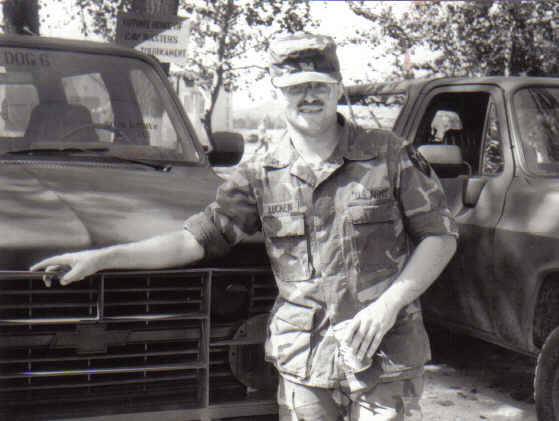
In January 1988, the 4th Squadron, 7th Cavalry Regiment, was reflagged as the 5th Squadron, 17th Cavalry Regiment. As part of the reorganization, Tom was reassigned first to Camp Stanley (about twenty miles northeast of Seoul) and later to Camp Mobile (about forty miles north of Seoul), where he served as the Training NCO (noncommissioned officer). With all these facilities being so close to Seoul, Tom managed to get tickets for the baseball games being played as part of the 1988 Olympics in Seoul. However, as the games drew closer, it became clear he wouldn’t be able to use them because his unit had to be ready in case North Korea tried to disrupt the games. Much to his dismay, he gave the tickets away.
In 1989, Tom was reassigned yet again, this time back to Troop Alpha at Camp Garry Owen to conduct ground scouting missions as he had when he first arrived in 1987. This time, though, he was a “track commander” in charge of his M113 APV. Things remained quiet until he reached the end of his tour in April 1990, although he continued patrolling the DMZ with his Troop during their rotational assignments up until the time he departed. For his next assignment, he was headed to a familiar place – the National Training Center (NTC) at Fort Irwin, California.
Tom arrived at NTC in April 1990, this time as an evaluator instead of the one being evaluated. His formal position was Operational Controller, or “OC”, as part of the Operations Group. As units rotated through NTC for training, Tom evaluated their performance and documented lessons learned. Then, in August 1990, Iraq invaded Kuwait, setting the stage for Operation Desert Storm and the ensuing Gulf War. Training at NTC in the Mohave Desert was ideally suited to preparing U.S. units to fight against the Iraqis and dislodge them from Kuwait. Thus, tactics taught focused on defeating the Iraqi army.
As U.S. units started to deploy to the Middle East in preparation for Desert Storm, Tom deployed to the theater operations center (TOC) in Saudi Arabia as part of an NTC contingent. Their mission was to update U.S. Army forces on the tactics necessary to defeat the Iraqis. Their tactics proved successful, as the U.S. led coalition launched its ground attack against the Iraqis on February 24, 1991, destroying the Iraqi Army in just four days. After the combat ended, Tom and the rest of the NTC team took the lessons learned back to NTC to refine and improve unit training and tactics.
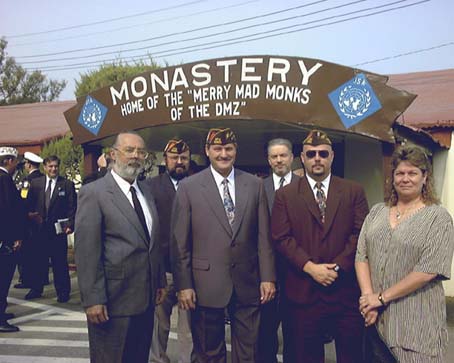
Tom returned to Fort Irwin in March 1990. Looking ahead, he saw his end of obligated service coming up in July 1991. Believing a force drawdown after the war was inevitable and having family issues to deal with, he decided it was time to move on to the next chapter in his life. He came back to Illinois for a short while, but ended up returning to South Korea as a contractor helping train M1-A1 Abrams tank and Bradley fighting vehicle crews. He also joined VFW Post 9985 at Camp Casey, rising to the level of Post Commander. As a result, he was privileged to participate in several somber ceremonies at Panmunjom where North Korea returned the remains of U.S. servicemembers killed during the Korean War.
After nine years in Korea and with his father’s health failing, Tom decided it was time to return to the United States for good with his wife and four sons in the summer of 2000. They initially settled in Florissant, Missouri, and Tom took a job with Pitney Bowes as an electronics technician. Seven months later, Pitney Bowes offered Tom a promotion if he would move to Vandalia, Illinois, and with the blessing of his mother who said it would be better for Tom’s boys, Tom accepted the position.
Tom and his wife of twenty-nine years, Chun-soon, stayed in Vandalia with their family for fifteen years. Always drawn to his veteran friends, Tom was again active in the VFW, this time rising to the level of Post Commander for VFW Post 9770 in Brownstown, Illinois. As with the repatriation ceremonies in Korea, Tom found delivering military rights at the funerals of his comrades-in-arms the hardest part of his role, but also the most essential. He feels compelled to honor those who have served our country.
Voices to Veterans is proud to salute Sergeant Thomas Lucken, U.S. Army, for his years of dedicated service in the Army during the Cold War. In his eighteen-year combined active duty and contractor career, he spent thirteen-and-a-half years serving our country on the front lines of the Cold War overseas. His dedication and that of other servicemembers like him sent a strong message to any would-be adversary that our forces are ready anytime, anywhere. We thank Tom for his service and wish him fair winds and following seas.
If you enjoyed Tom’s story, please sign up for the Voices to Veterans Spotlight monthly newsletter by clicking here. Once each month, you’ll receive a new written veteran’s story and a new podcast directly in your mailbox. Best of all, it’s free and you can unsubscribe at any time.
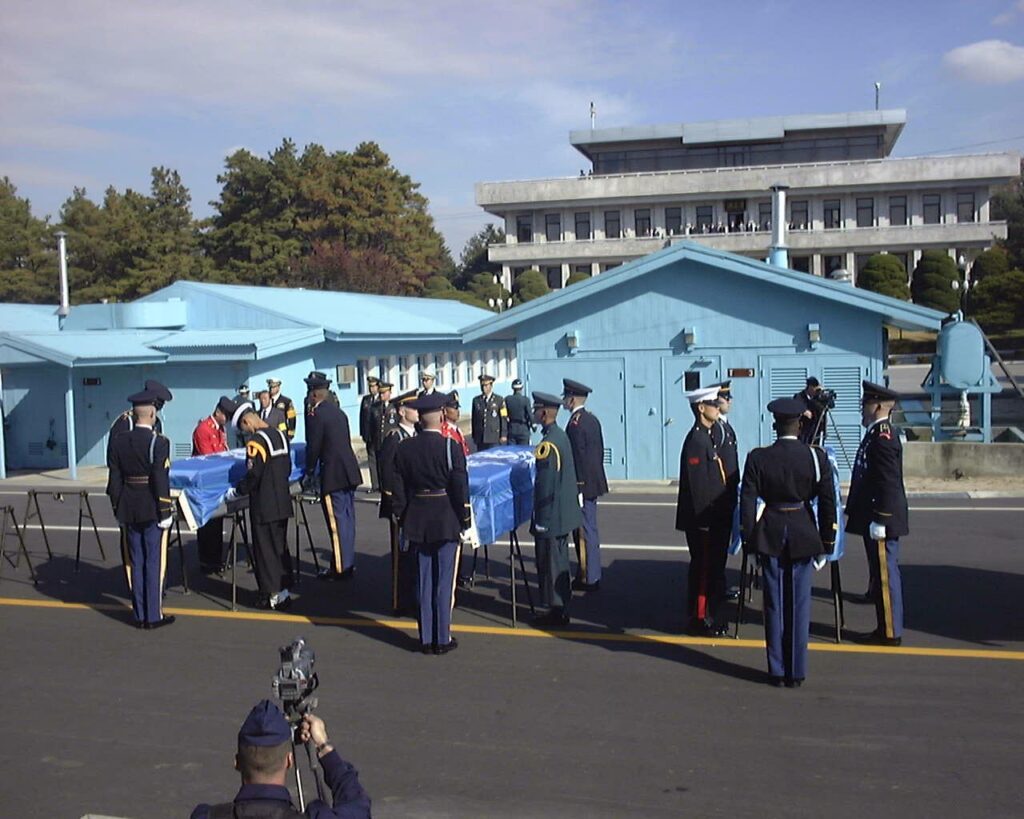



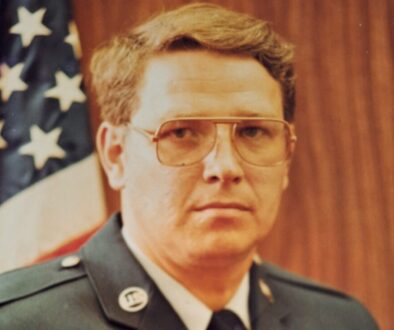

October 26, 2022 @ 1:18 AM
Thank you for your Service and Sacrifices for our Grateful Nation and World Freedom 🌎
October 29, 2022 @ 10:03 AM
Michael,
Thanks for taking the time to read Tom’s story!
V/r,
Dave Grogan